Wild Amur Leopards in Russia
2014 update
I thought, I'd update readers with a few details on recent known amur leopards that are living in the wilds of Russia, despite all the odds stacked against them from poaching, habitat loss, forest fires, inbreeding and other problems. The WCS's camera monitoring survey took 156 photo's including this nice picture of a very unique individual that I'm nicknaming 'Bobtail the Amur Leopard' thanks to amur-leopard.org for the photo on their website. Interestingly Bobtail has been identified as Pp16 by the scientists. There was 17 leopards in total identified (presumably Pp01 to Pp17), though only 2 of these were cubs. As males have a greater range it's also likely that more males than females were 'camera trapped'. There is also evidence of Amur Leopards in the northern border with China.
Camera traps have been able to capture photos of the ultra rare wild amur leopards, whose spots are unique to each individual. In 2011 there were also 17 leopards in identified. In 2010 there were 12 identifiable leopards (from 63 photos); 9 identifiable leopards were photoed in 2009 (though another 72 other photos could not identify the sepcific leopard); 8 identifiable leopards were photoed in 2008; 13 identifiable leopards were photographed in 2007.
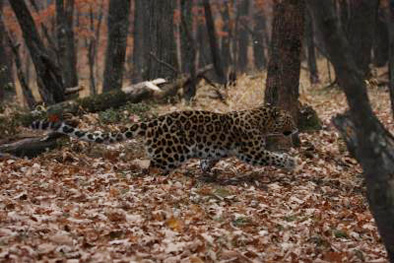
I've nicknamed the above amur leopard Jacko, was one of Dr John Lewis' recently captured (and released) leopards for in-the-field health tests. The scientific tag name is Pp05. Here is another photo below of a captured, tested and released animal.
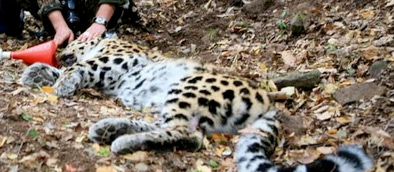
Dr Lewis has led an expedition every autumn since 2007, this picture with a tested and released leopard:
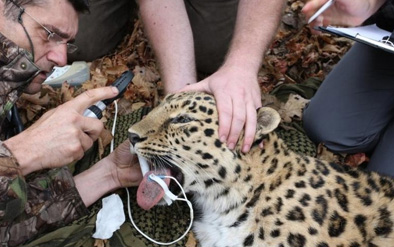
The 2011 finding indicate that there is likely to be up to 35 Amur Leopards in the Russian forests.
I've also nicknamed this male leopard as 'Hunchun' as he was found in October 2010 in China's Jilin Province on their Hunchun reserve. This is the first evidence of any wild amur leopards for decades. The WCS is helping investigate further with more cameras.
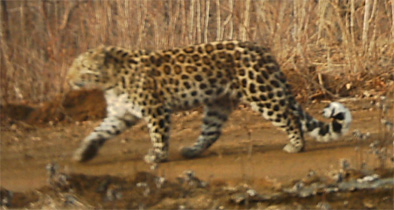
In 2004 leopard 'Leopold' was captured on camera, he still had a radio collar from a 1994 study, when he was estimated to be 3-5 years old. Probably he is the most famous wild amur leopard in the world!
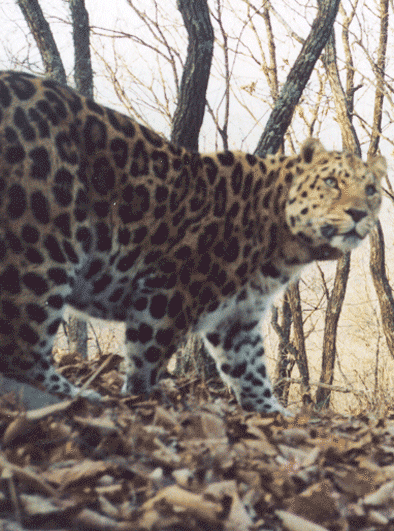
In September 2008 a leopard was seen at Garmov farm, Russia with a deer.
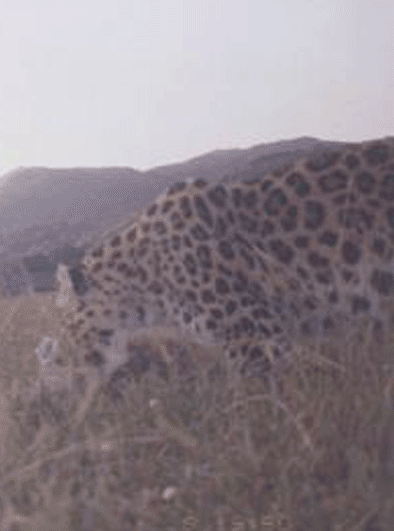
In November 2008, a team of conservationists captured a female nicknamed ‘Alyona’, aged 8-10 years, 39kg, pictured below and later released.
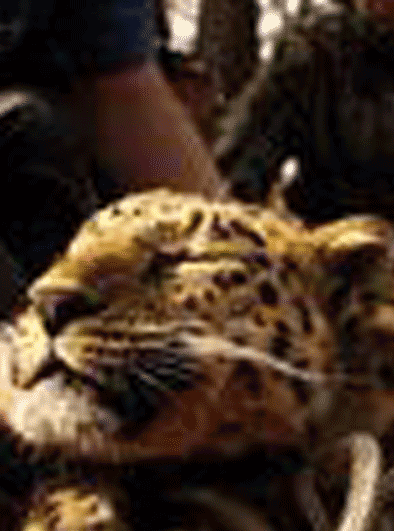
from the rugged Primorsky Krai region of Russia's Far East and also recaptured male 'Pp02'.
In Autumn 2006 had health analysis of two other male Amur leopards were taken – leopards 'Pp01' and 'Pp02', and Oct 2007, pictured below is the recaptured and resampled male leopard from Oct 2007.
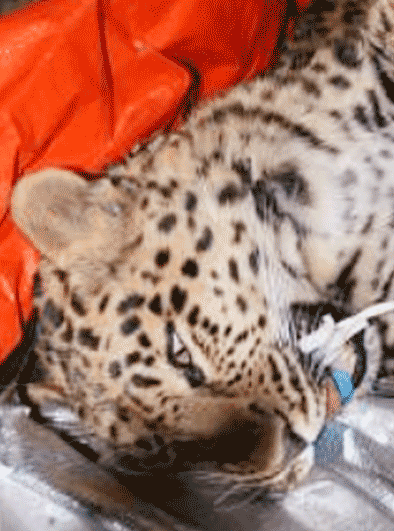
Other European and USA zoo's are alsoare home to more of these rare and critically endangered animals.
Many thanks also, to those that have posted these superb pictures elsewhere on the internet.
You may also be interested in:
Amur Leopards in UK zoos, 2009